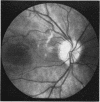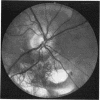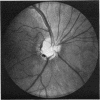Abstract
Contrast sensitivity was evaluated in 95 patients who regained a visual acuity of 6/6 following a contusional injury of one eye. The injuries occurred 2 to 12 years prior to examination. A book of printed sinusoidal grating patterns of varying contrasts and spatial frequencies was used, and 15 patients were found to have a significant difference in contrast sensitivity between injured and uninjured eye. Eight patients had abnormalities of the media or fundus, and in 2 patients amblyopia was probably a factor. Five patients had a defect in contrast sensitivity in their injured eye, although no structural abnormalities could be detected on full clinical examination. Alterations in contrast sensitivity appeared to be a sensitive indicator of functional abnormality in eyes which appeared normal on ophthalmoscopy and other clinical investigations.
Full text
PDF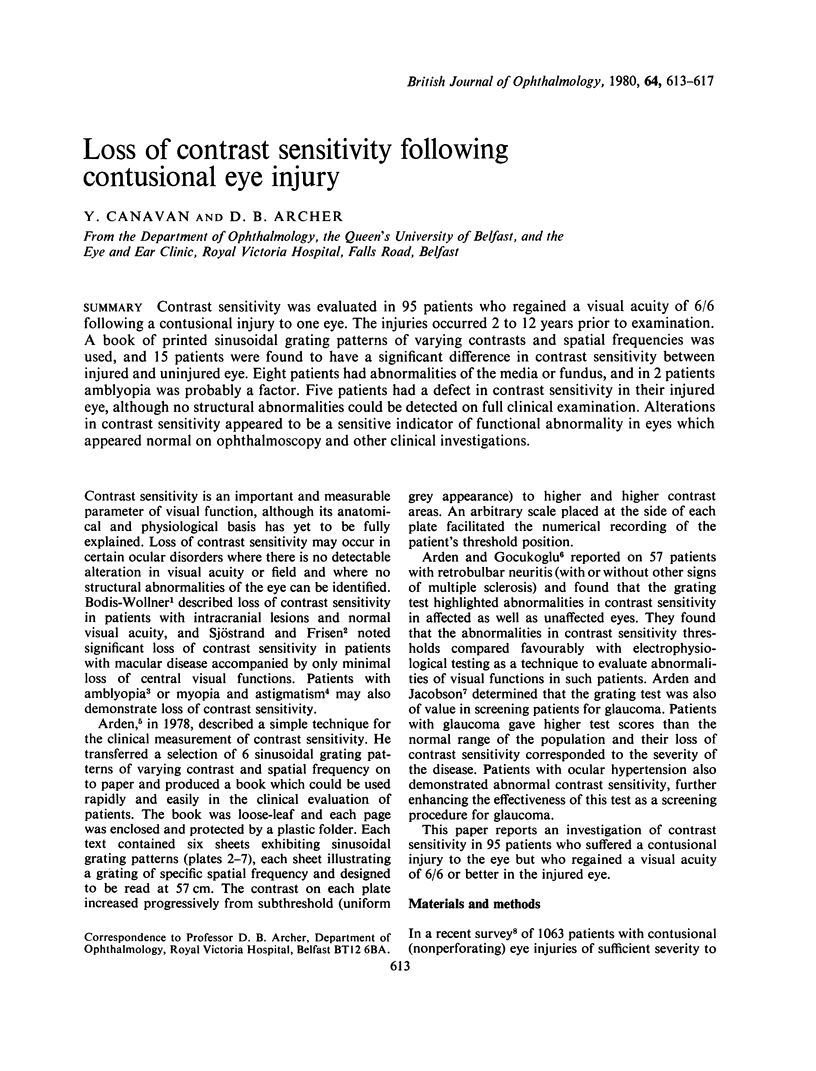
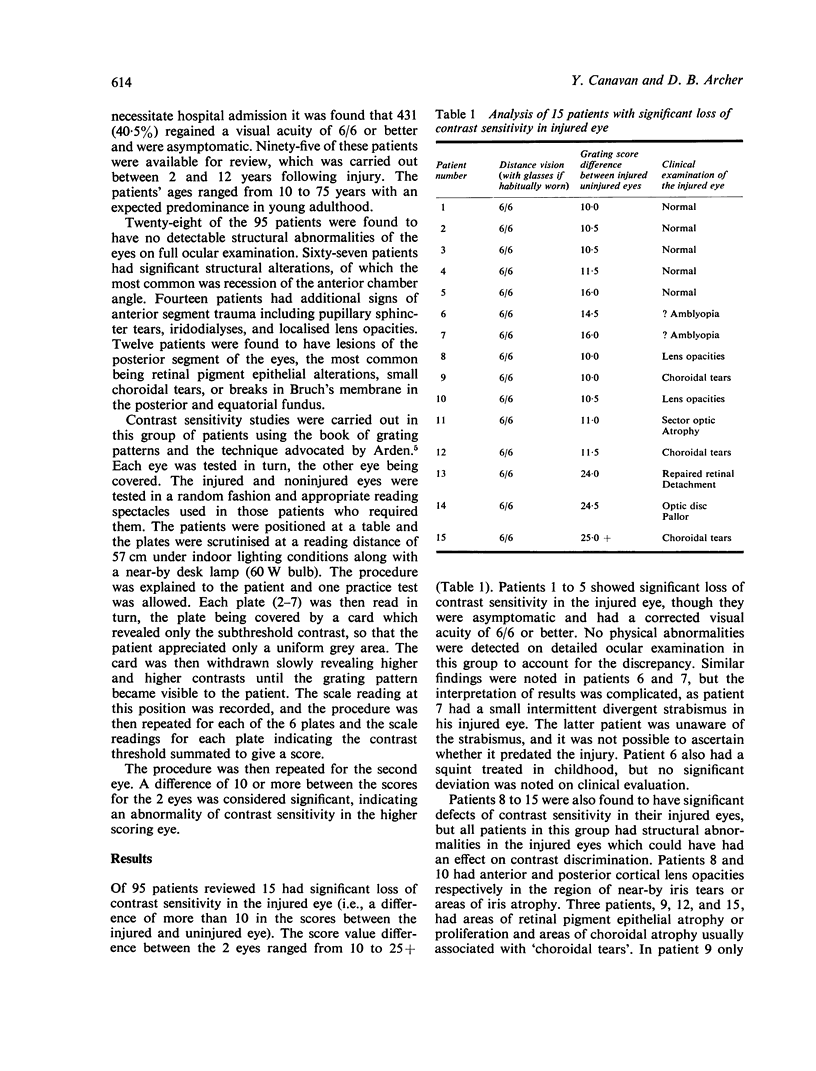
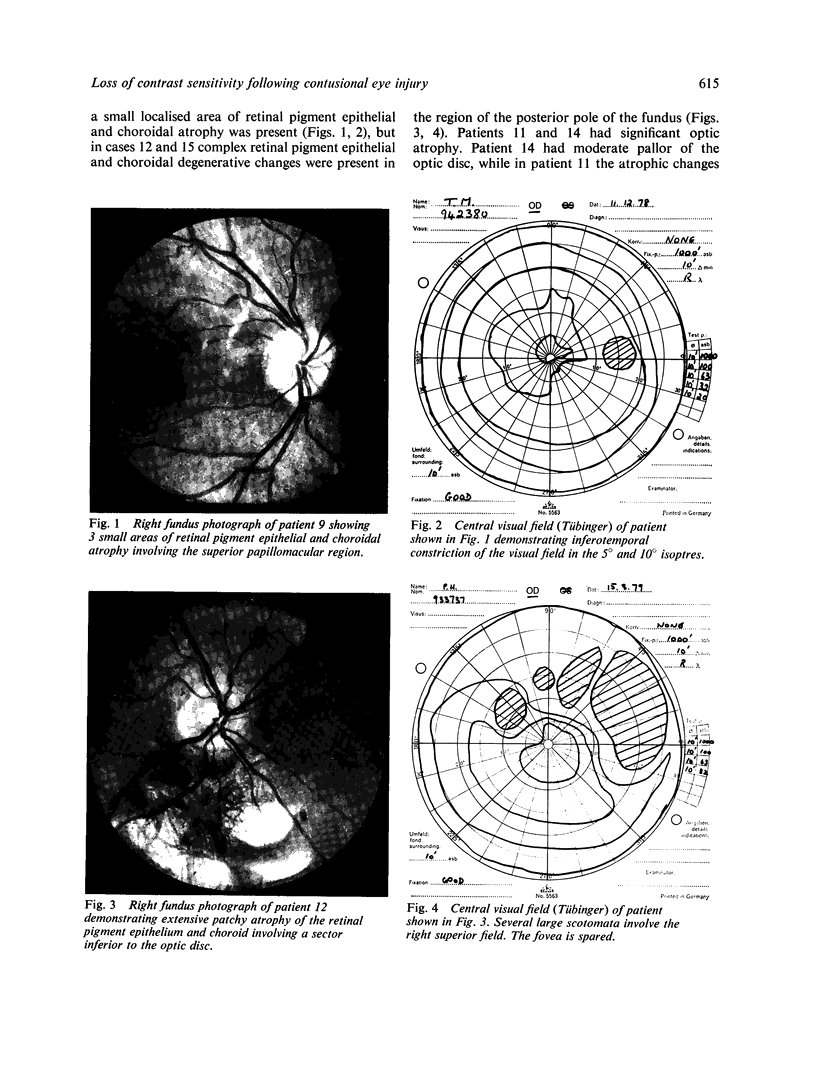
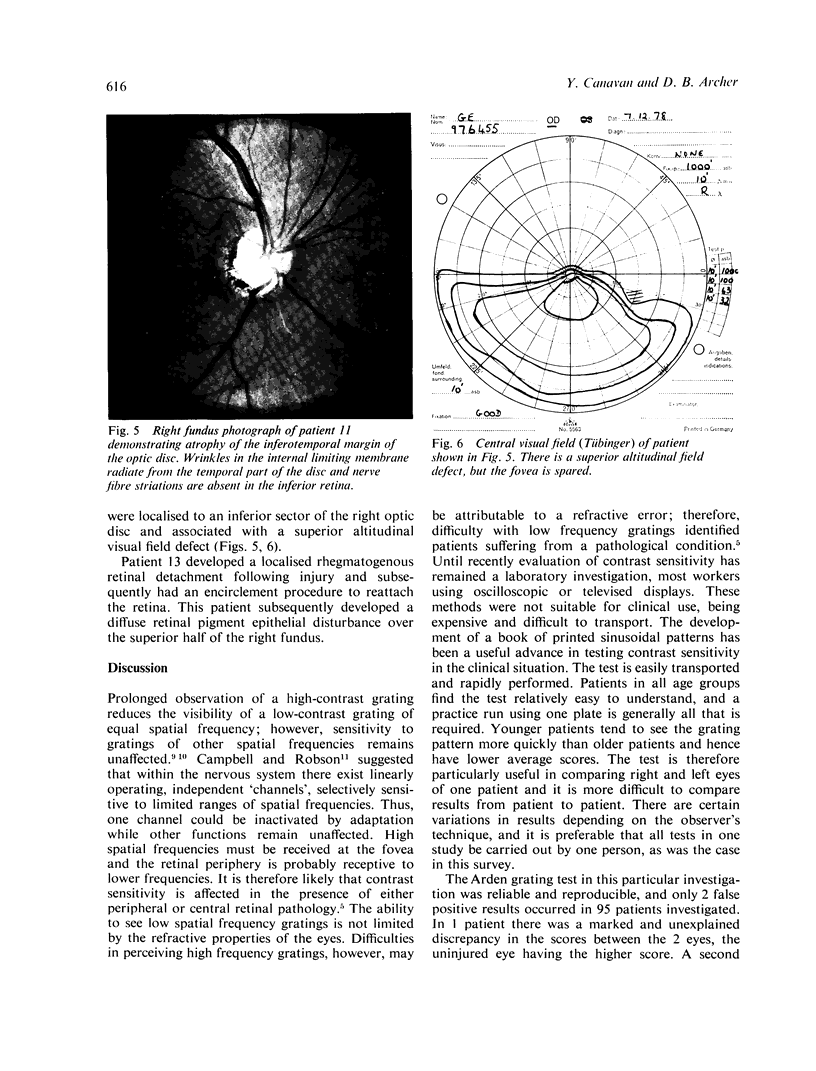
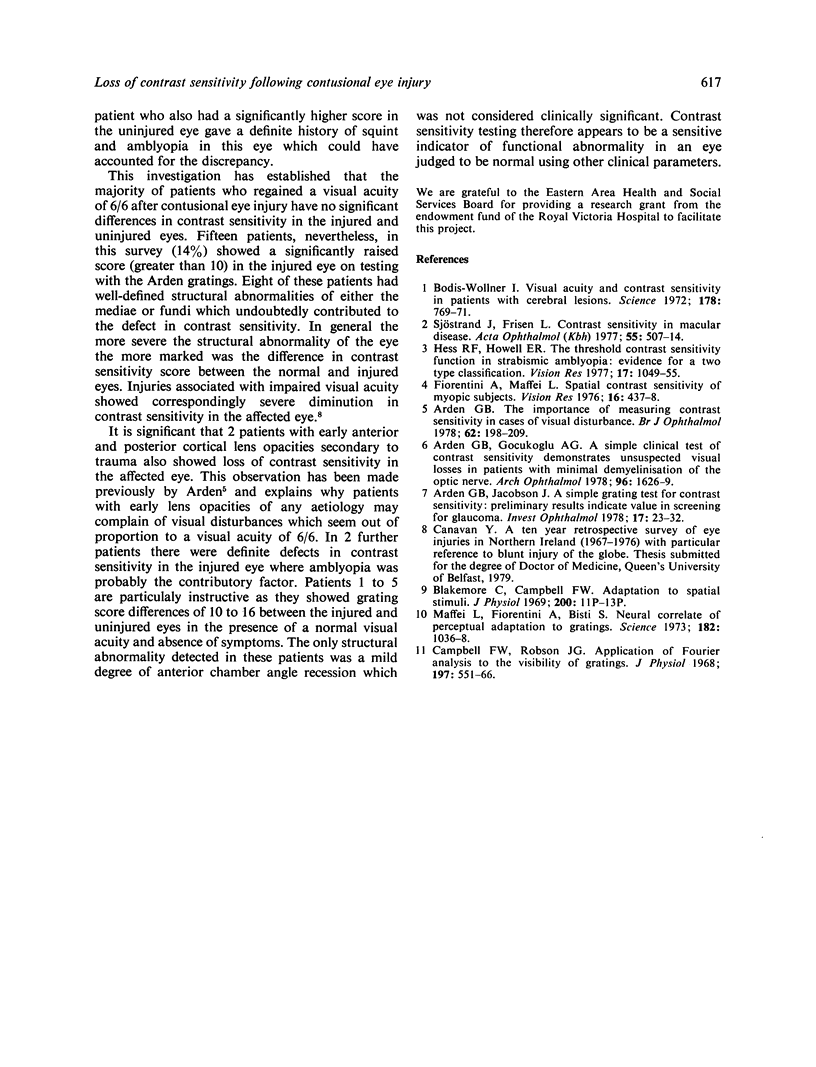
Images in this article
Selected References
These references are in PubMed. This may not be the complete list of references from this article.
- Arden G. B., Gucukoglu A. G. Grating test of contrast sensitivity in patients with retrobulbar neuritis. Arch Ophthalmol. 1978 Sep;96(9):1626–1629. doi: 10.1001/archopht.1978.03910060260015. [DOI] [PubMed] [Google Scholar]
- Arden G. B., Jacobson J. J. A simple grating test for contrast sensitivity: preliminary results indicate value in screening for glaucoma. Invest Ophthalmol Vis Sci. 1978 Jan;17(1):23–32. [PubMed] [Google Scholar]
- Arden G. B. The importance of measuring contrast sensitivity in cases of visual disturbance. Br J Ophthalmol. 1978 Apr;62(4):198–209. doi: 10.1136/bjo.62.4.198. [DOI] [PMC free article] [PubMed] [Google Scholar]
- Barlow H. B., Levick W. R. Three factors limiting the reliable detection of light by retinal ganglion cells of the cat. J Physiol. 1969 Jan;200(1):1–24. doi: 10.1113/jphysiol.1969.sp008679. [DOI] [PMC free article] [PubMed] [Google Scholar]
- Bodis-Wollner I. Visual acuity and contrast sensitivity in patients with cerebral lesions. Science. 1972 Nov 17;178(4062):769–771. doi: 10.1126/science.178.4062.769. [DOI] [PubMed] [Google Scholar]
- Campbell F. W., Robson J. G. Application of Fourier analysis to the visibility of gratings. J Physiol. 1968 Aug;197(3):551–566. doi: 10.1113/jphysiol.1968.sp008574. [DOI] [PMC free article] [PubMed] [Google Scholar]
- Fiorentini A., Maffei L. Spatial contrast sensitivity of myopic subjects. Vision Res. 1976;16(4):437–438. doi: 10.1016/0042-6989(76)90214-5. [DOI] [PubMed] [Google Scholar]
- Hess R. F., Howell E. R. The threshold contrast sensitivity function in strabismic amblyopia: evidence for a two type classification. Vision Res. 1977;17(9):1049–1055. doi: 10.1016/0042-6989(77)90009-8. [DOI] [PubMed] [Google Scholar]
- Maffei L., Fiorentini A., Bisti S. Neural correlate of perceptual adaptation to gratings. Science. 1973 Dec 7;182(4116):1036–1038. doi: 10.1126/science.182.4116.1036. [DOI] [PubMed] [Google Scholar]
- Sjöstrand J., Frisén L. Contrast sensitivity in macular disease. A preliminary report. Acta Ophthalmol (Copenh) 1977 Jun;55(3):507–514. doi: 10.1111/j.1755-3768.1977.tb06128.x. [DOI] [PubMed] [Google Scholar]



